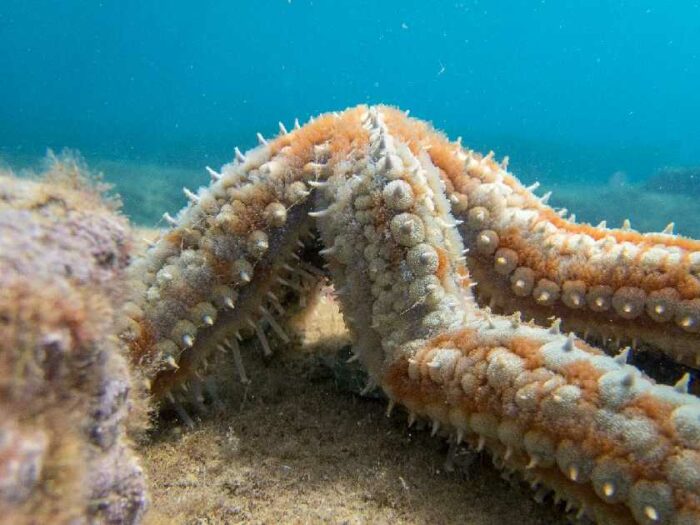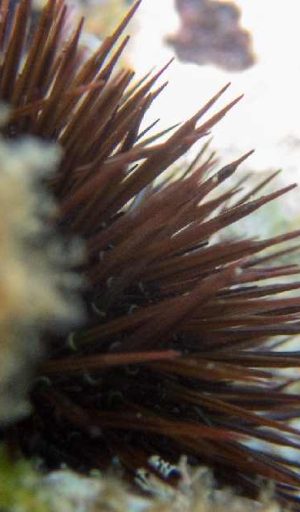A beautiful sustainable story
explore
Agia Pelagia's
beach

take a look at the marvellous sites and spots of the beach
The beach of Agia Pelagia is an attraction for its visitors every year, not only for its archaeological significance but also for the natural beauty of the landscape and the uniqueness of its marine wealth.
Information
The beach takes its name from the homonymous chapel that is carved into the rock, at the northwestern end of the coast. The celebration of Agia Pelagia is celebrated even today with special splendor. The small church is also called Evresis (=Finding, in Engish) because there, according to tradition, the icon of Agia Pelagia was found.
The area of Agia Pelagia is of archaeological interest, since there are findings from the Minoan period but also from the Roman era. These show organized habitation by the Minoans, with finds of residential facilities as well as an ancient sanatorium and a theater. In fact, the residents claim that the “aurora” of the area, has thermal effects, something that is associated with the choice of location for the construction of the ancient sanatorium. Also, over the settlement there is the Holy Temple of Agia Pelagia, founded as a Monastery. From there we see Cape Attali. It is said that on this coast, sick people in pain were covered with sand and were well, which is mentioned by the Florentine priest Cristoforo Buente lmonti. Every year, believers from all over Crete gather for the pilgrimage and many of them are covered with sand during the whole service and the procession.
The marine flora and fauna of the area is particularly intense. The beach rock which is located mainly in the eastern and central part of the beach, at a depth of 2m, is a suitable place (habitat) for the settlement and development of a large number of species, such as Sponges, Bryozoans and Tunicates, while attracting many groups of coastal fishes, such as Goldline Bream, Sea Bream, Rainbow fish and Damselfish. The coastal rock is part of the older coastline and was created by the collapse of salts with sand and pebbles and can give us useful geological information about the shape of the beach in earlier times.
Along with the coastal rock, the meadows of the protected species of Posidonia (Posidonia oceanica) are impressive, which host a large number of marine species but also are areas for the growth of small fishes. Bivalve and Gastropod Mollusks along with Sea Urchins and Shrimp find shelter in the dense foliage of the meadows. The scattered meadows extend almost along the entire length of the beach and are located at a depth of more than 3m.
On the west side of the beach the seabed is mainly rocky with various geological formations capable of hosting a large number of species. Here is found a great variety of sessile species such as Sponges, Tunicates and small Corals while the flora is also rich and mainly consists by brown and red algae. In addition, small groups of Damselfish, Goldline Bream, Sea Bream and White spotted Bream of various sizes are scattered throughout the area. The presence of sea urchins is also intense, mainly black Urchins, which are exposed either on the reef or in crevices.
Νext to the main beach of Agia Pelagia, a small cove with a small sandy beach is formed, where it can be reached either through a small footpath, which starts from the chapel of Agia Pelagia, or through the sea, which is the safest and recommended way. The white color of the sand and the intense vegetation of the surrounding area give an impressive color to the waters of the bay.
Finally, it should be noted the discreet presence of non-native species that are established in the area such as the Dusky Spinefoot fish and Lionfish fish and the impressive Long-spine Sea Urchin.
The terrestrial flora and fauna of the area is particularly degraded due to the intense residential development as it is limited to the western part of the beach, after the chapel of Agia Pelagia. The vegetation that the visitor will encounter is limited to tamarisk trees and various species of succulents and cacti.
The Municipality of Malevizi is a coastal municipality in the northern part of the prefecture of Heraklion, which was established in recent years, after the merge of the neighboring municipalities of Krousona, Gazi and Tylissos. According to the official data of the statistical census of 2011, the permanent residents of the Municipality are listed in 24,864 while its geographical area is about 290 sq. Km. The main activities of its inhabitants are purely rural, supplemented by handicrafts and tourism. Tourism is the first source of income for residents due to the large number of hotel and tourism companies operating in the area.
Agia Pelagia is a coastal settlement of the most developing of the Municipality of Malevizi. It is located in the northwestern part of the prefecture of Heraklion and belongs to the municipal district of Achlada while according to the 2011 census there are 480 permanent residents. Near Agia Pelagia beyond the homonymous beach are the beaches of Lygaria, Mades, Mononaftis and Psaromoura which are framed by small picturesque coves and rock formations.
The beach of Agia Pelagia is located at the end of Achlada valley, 20 km west from Heraklion city. The holiday settlement of Agia Pelagia extends along the coastline with the coastal front being covered mainly by tourist catering enterprises. The total length of the beach reaches 450m and the average width 10m while the substrate of the beach is characterized as sandy with scattered pebbles. In the middle of the beach there is a seasonal river. The beach is one of the most attractive summer destinations for both tourists and locals. The orientation of the beach is such that it is protected from the prevailing winds during the summer period (meltemia) and therefore there is no strong waves and this makes the area very friendly for visitors.

